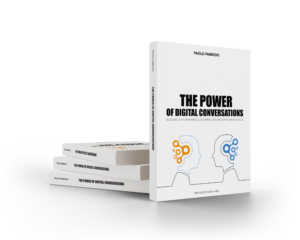I know that this title is pretty ambitious. Actually I did it on purpose because I want to set the record straight from the very beginning, stressing out two debated concepts: the first one is budget for customer service and the second one is frequency. Now, let’s join the dots if you really want to stand out from competitors.
Bridging the cultural gap
99% of companies consider as normal having a yearly budget for marketing and sales activities. Unfortunately they have a far different approach when it comes to customer service. The reason why? A long-lasting cultural gap that can be briefly summed up in this refrain: ‘investing in marketing / sales is necessary to acquire new customers.’ The missing part though is that if you don’t take care of acquired customers you’re bound to lose them – frustrating all your previous efforts and investments. So that the missing link is setting up a yearly budget 💰 for customer service for maintenance and efficiency of three main areas:
- Infrastructure & tools – keeping your omni-channel support platform up-to-date every year, adding new features or agents seats at scale.
- Processes & procedures – reviewing and upgrading them where necessary as per each support channel, in order to reduce internal efforts and optimizing customer experiences.
- Up-skilling & re-skilling – of both for customer service managers and teams to help them integrate ad hoc digital competencies and capabilities.
Enlightened organizations
Now, the good news is that a growing number of companies have finally evolved their 20-year approach to budgeting. They did it because they foresaw this clear business opportunity:
Leveraging Digital Customer Service conversations to consolidate trust in the long run.
Take a minute to focus on this sentence because it comprises three strategic goals:
- Having happy customers that want to stay with you as long as possible. That means reducing customer churn rate and at the same time, keeping acquisition costs for new business under control (e.g. for advertising).
- Having customers that are willing to spend more, as the relationship improves, just like a good red wine. That meanings paving the way for fruitful up & cross-selling activities. Therefore selling with customer service has become for such organization a dream come true.
- Position your brand as a customer service top-notch role model to be looked at by customers and imitated by competitors. That happens when you are able to add value to each digital conversation you have with your customer. That happens after laser focussing your investments to gradually turn your customer support into a revenue generator.
How about your budget?
During these last 7 seven years I’ve been lucky enough to work with smart organizations that have consistently invested in customer service. So, if you’re still struggling with budget leftovers for customer service I suggest you to watch and share this 1-minute video with your peers to raise awareness..
💡 Then let’s start our private conversation about this hot topic.
Have great conversations.
Image credit: Unsplash.com







